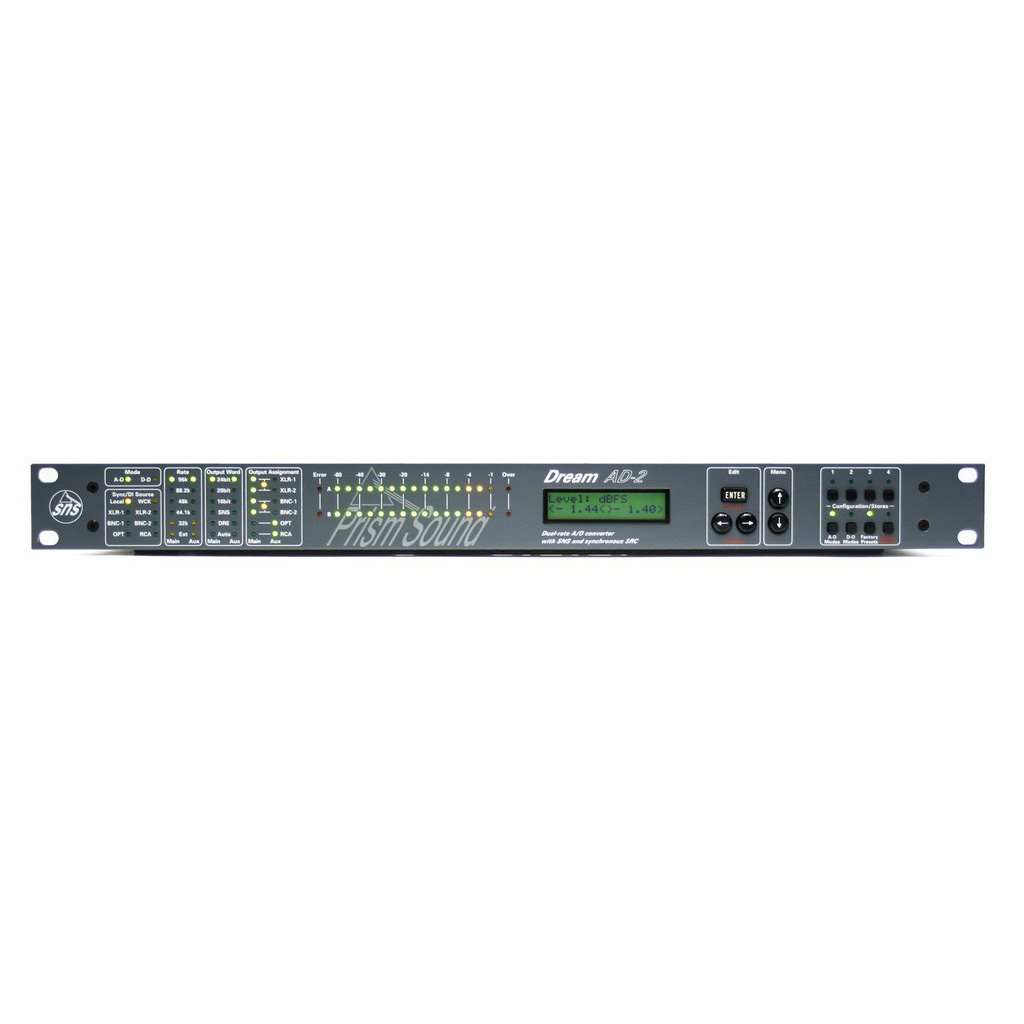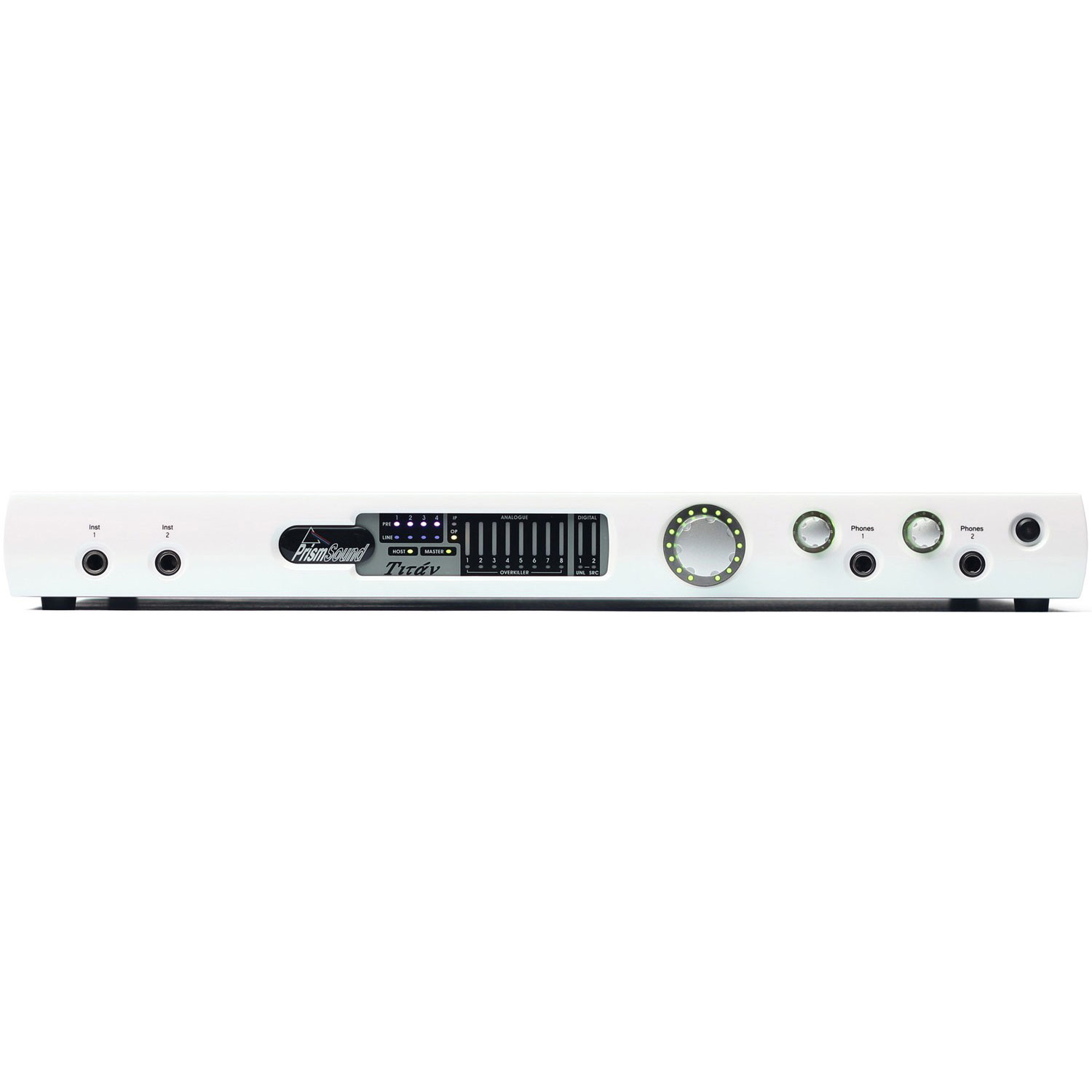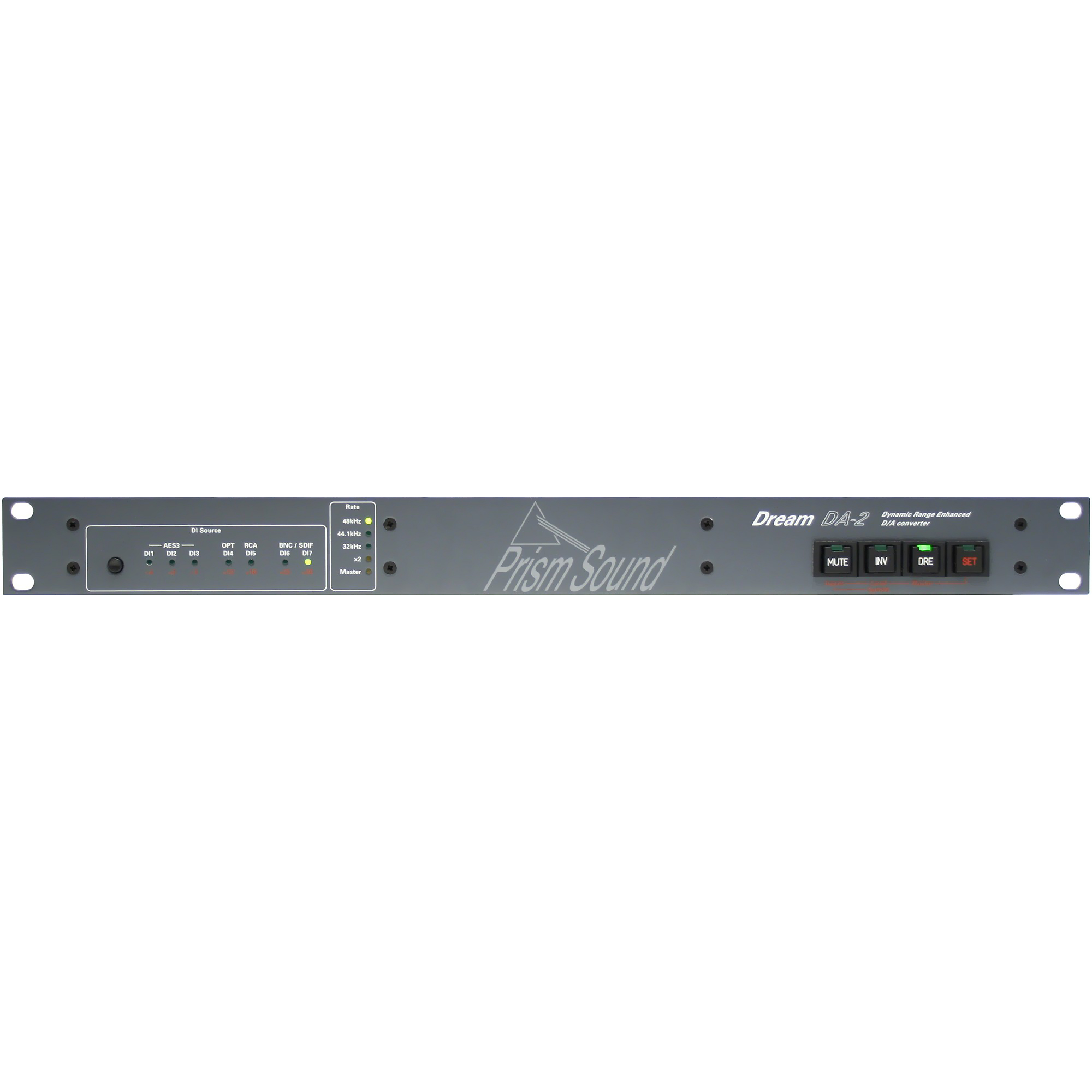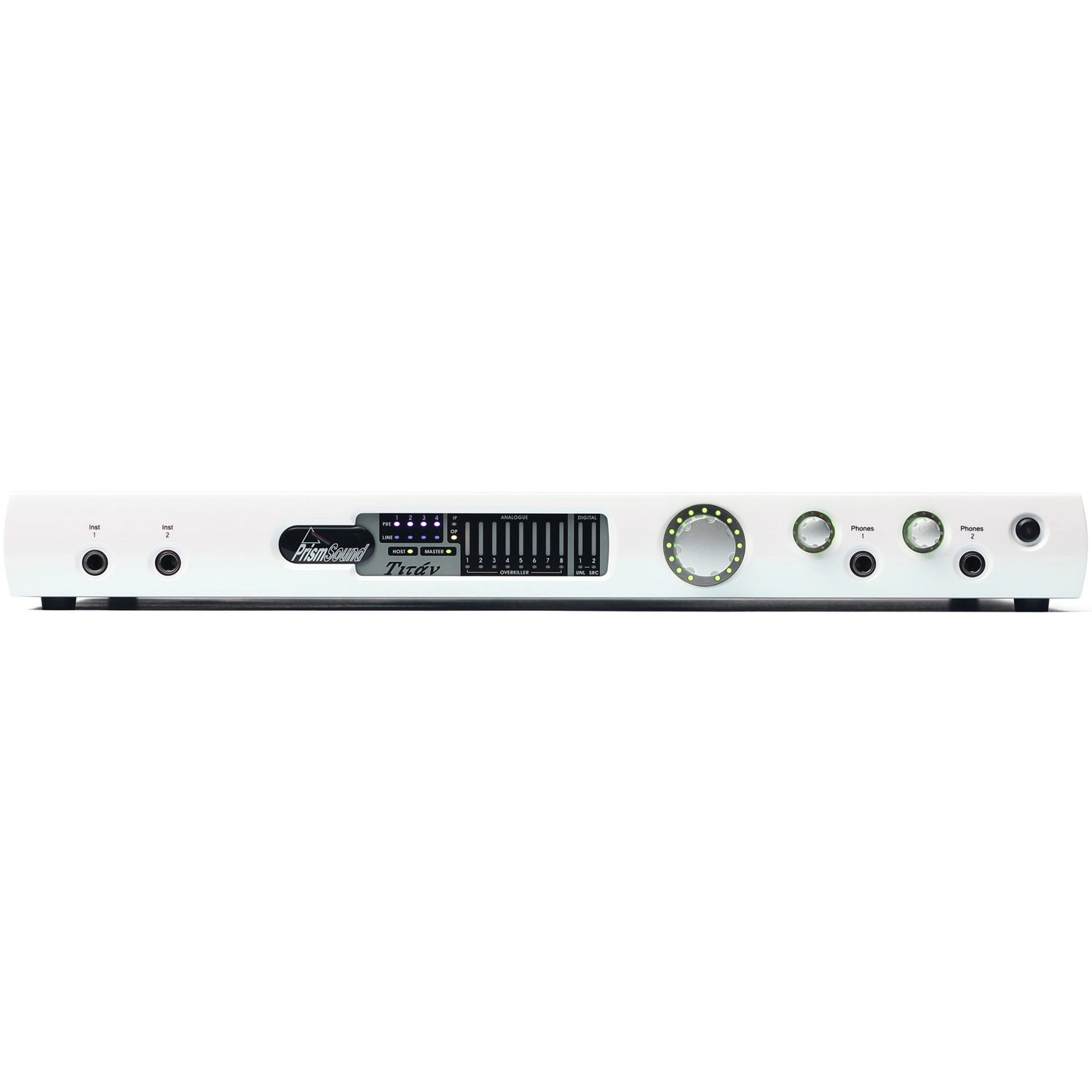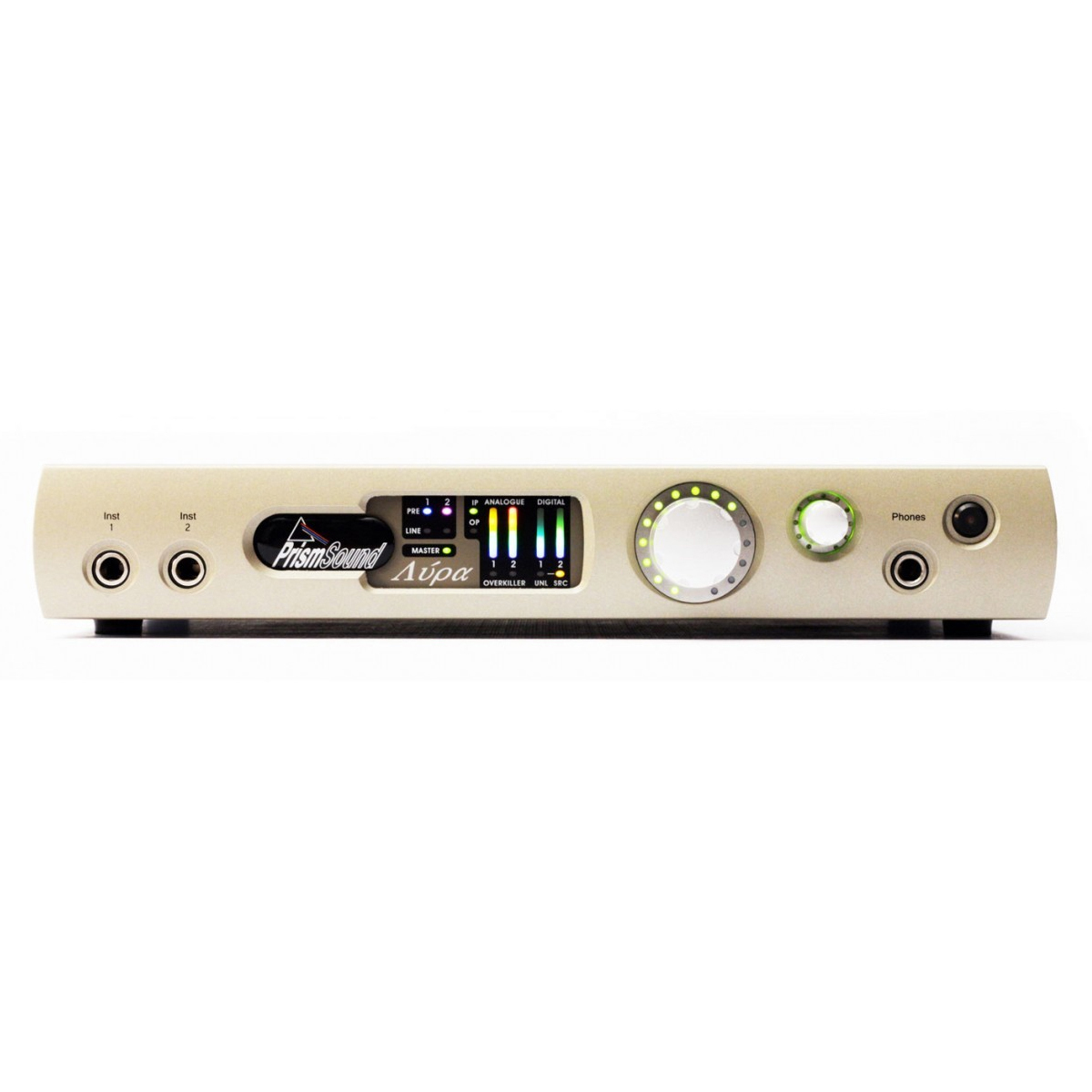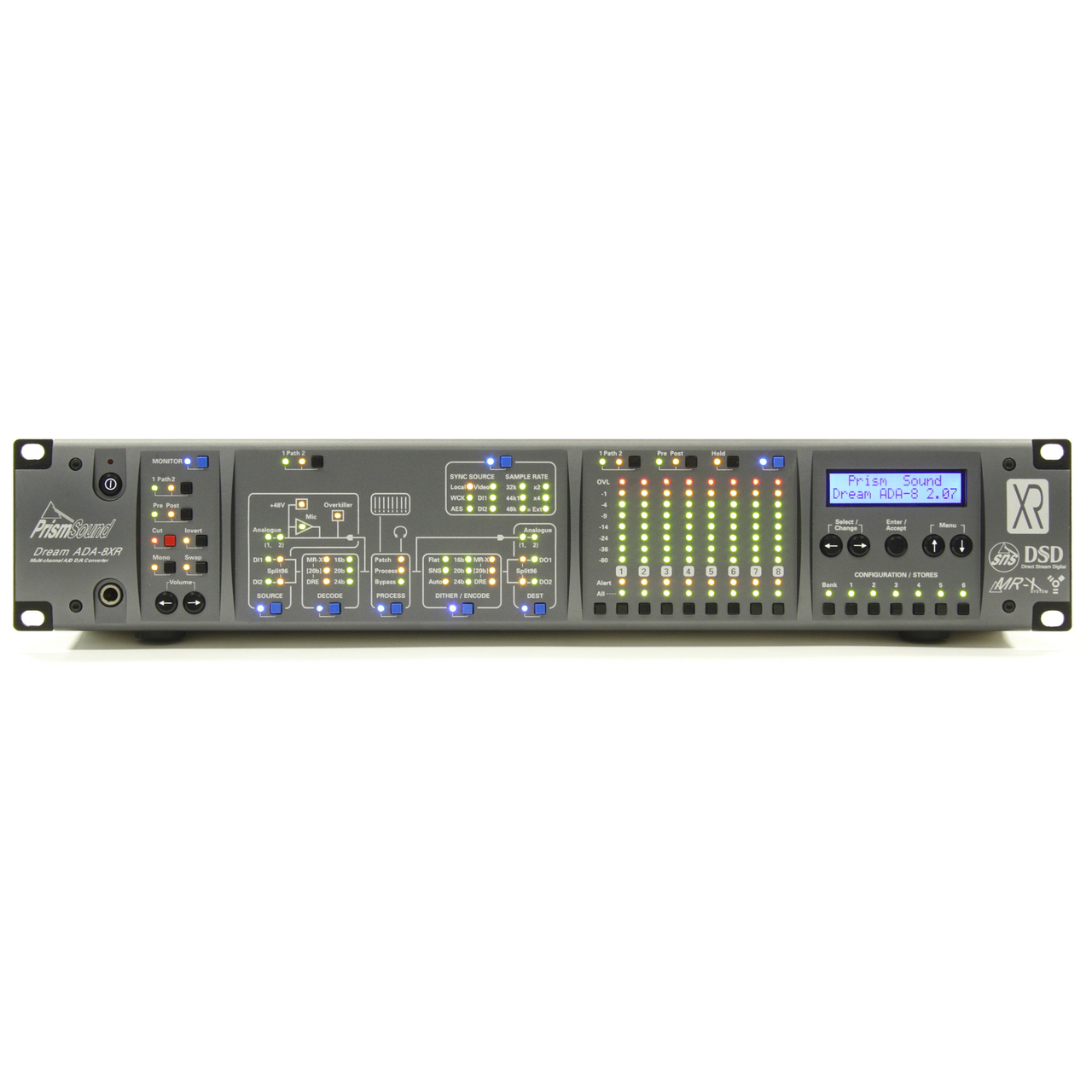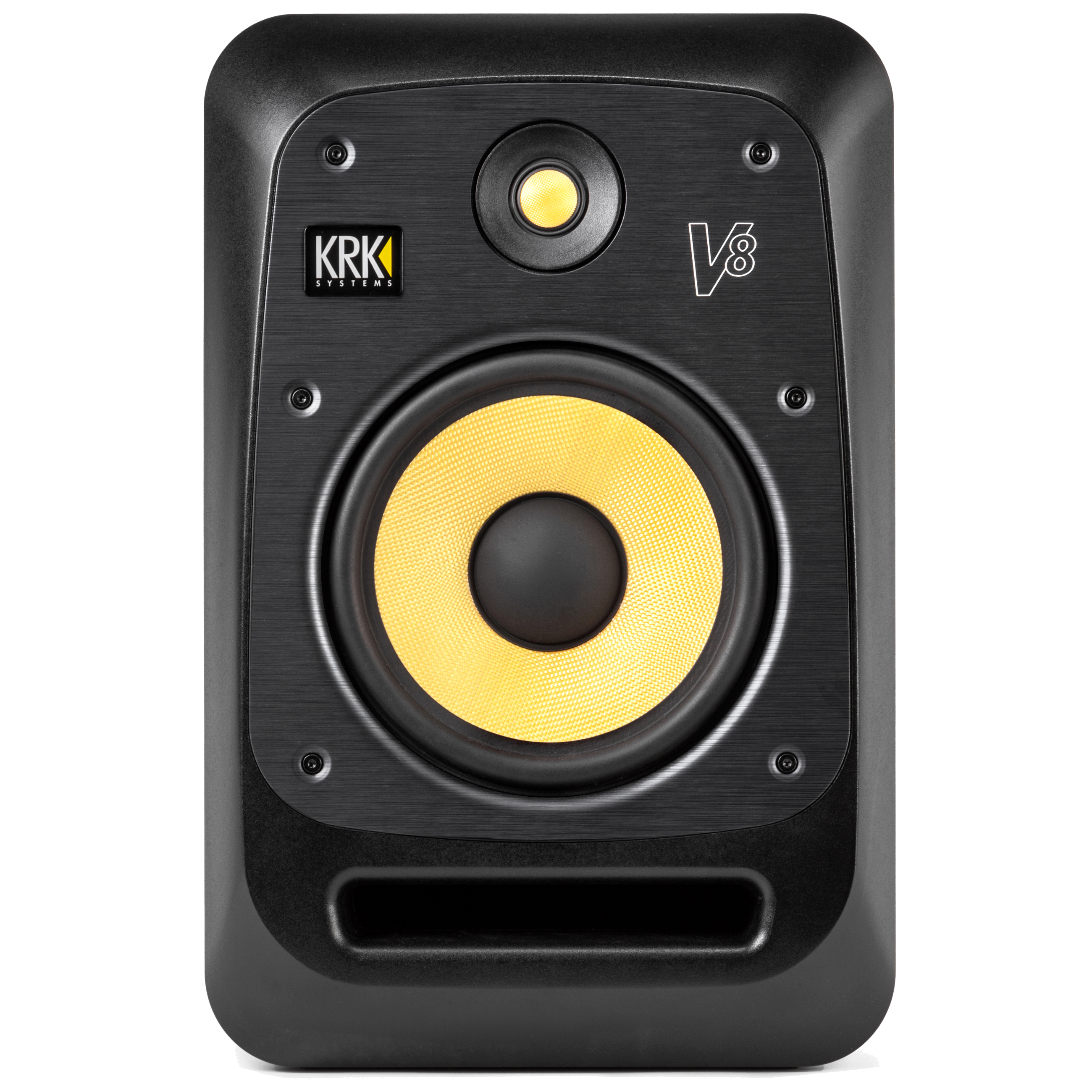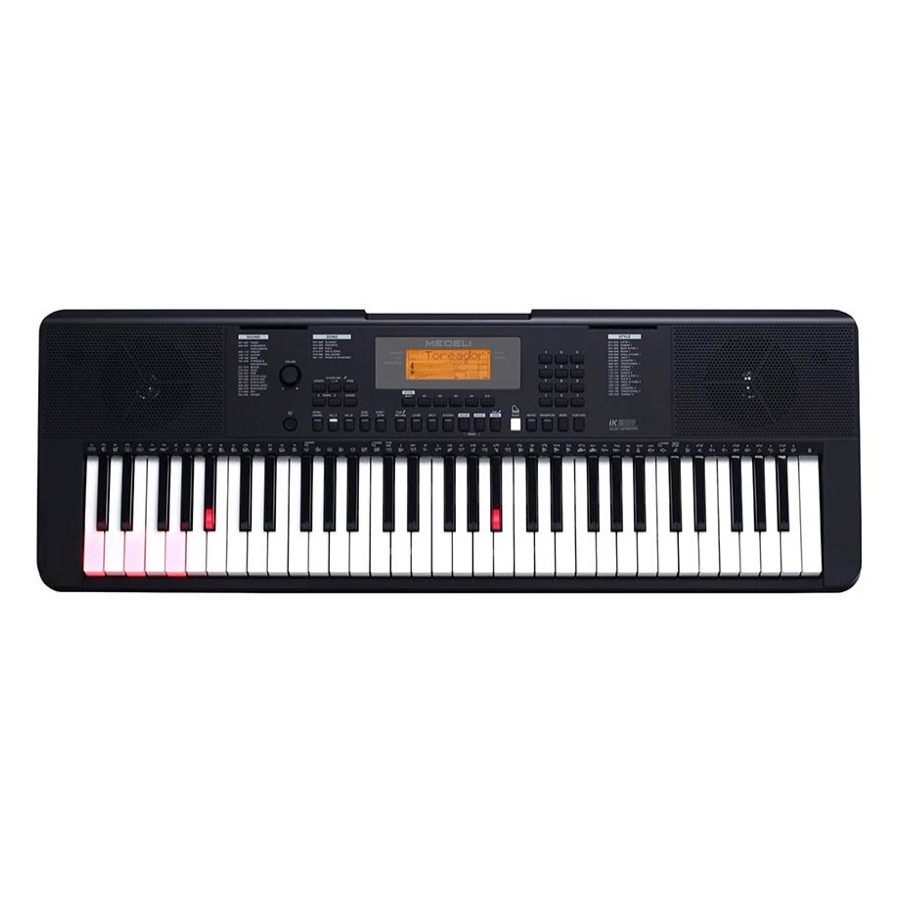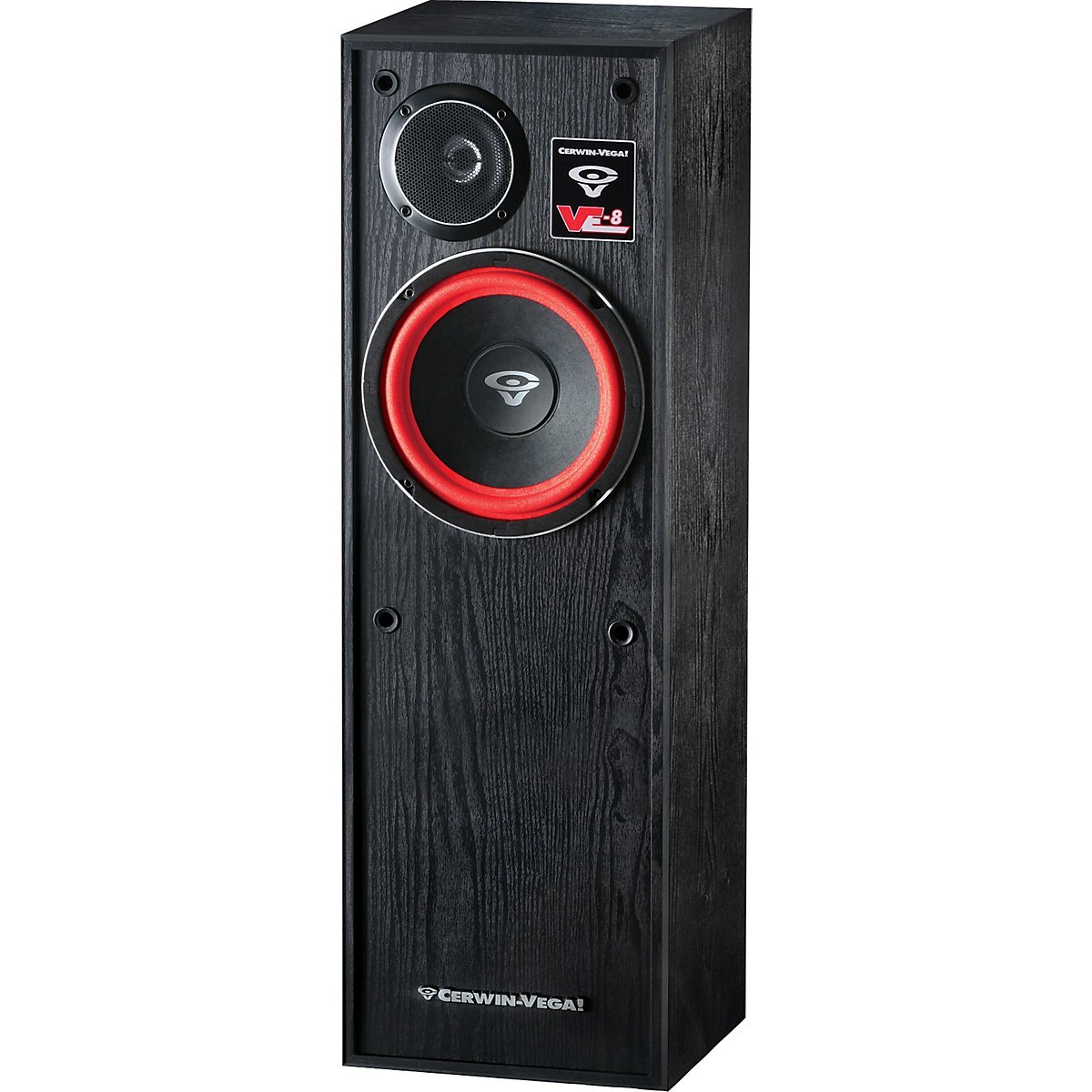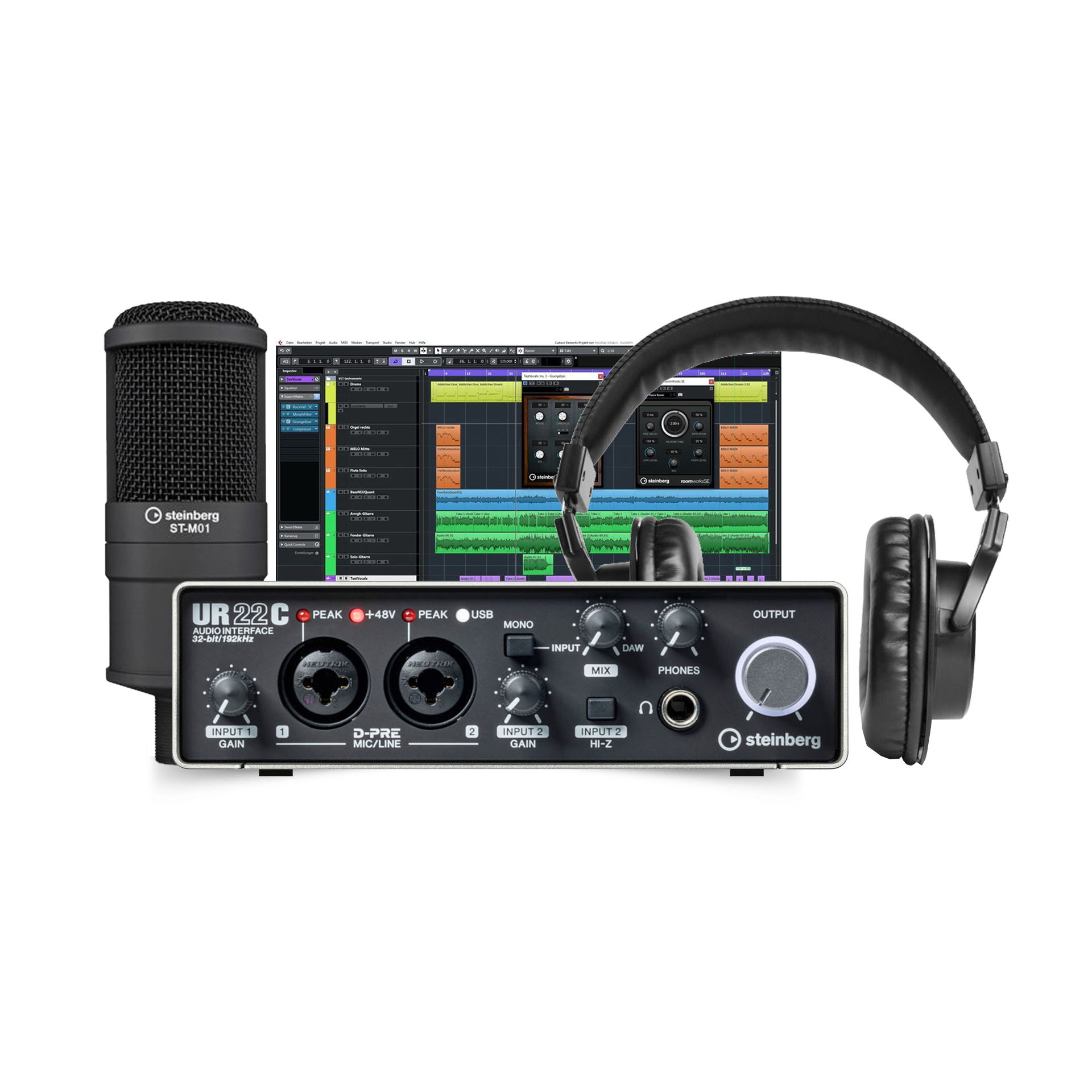Prism AD-2 converter
The AD-2 conversion system provides an audio stream of such exceptional quality that it will be relied upon for years to come as the definitive source for productions on CD, DVD, Super Audio CD or other formats as they become available. It offers a wealth of sophisticated features as well as high-performance, multi-rate A/D conversion for the most exacting applications in sound recording, mastering and broadcast.
Performance
Converter performance is pushed ever-nearer the limit: Dynamic range reaches a massive 130dB, THD+N at full scale is raised to 108dB (0.0005%). Clock stability, and rejection of incoming reference jitter are also improved.Flexibility
The AD-2 is like two separate A/D converters, plus a digital processor, all in one: it can generate two entirely separate output signals simultaneously. These can have different sampling rates, different word-lengths - even use different noise-shapers. For example, you can output a 96kHz / 24-bit signal and a 44.1kHz / 16-bit noise-shaped signal at the same time.Apart from its breathtaking performance, the analogue front-end of the AD-2 includes many new features: Analogue input sensitivity (and inter-channel balance) is software-programmable over the entire range with 0.05dB resolution. Just as with the AD-1, the inputs are transformerless, electronically balanced and galvanically isolated (fully floating), to ensure freedom from noise pick-up and crosstalk.
Digital to Digital Sample Rate Conversion
The 'D-D' (digital-to-digital) path, first provided in the AD-1, has been improved still further in the AD-2: It still offers re-dithering, noise-shaping and DRE encoding / decoding, but now it has synchronous sample-rate-conversion (SRC) as well. So you can re-process your 96kHz, 24-bit masters to 44.1kHz 16-bit streams for CD, or you can up-sample low-rate recordings for post-processing at a higher rate... in fact, you can convert between any two standard sampling-rates - synchronously. Synchronous sample-rate-conversion, if correctly performed, is free of the distortion artifacts associated with conventional 'variable-rate' SRCs.Noise Shaping
The four tried and tested Super-Noise-Shaping ('SNS') curves are extended to include optimal shaping for the higher sampling rates. The SNS process gives greatly-improved small-signal performance for limited word-lengths, such as CD, and is completely compatible with existing D/A converter products (including consumer and professional CD players).
Dynamic Range Enhancement
The popular DRE function is retained from the AD-1: this allows you to make 24-bit quality recordings on 16-bit recorders such a DAT. DRE (Dynamic Range Enhanced) recordings need to be decoded on playback; the decode function is provided as an option in the 'D-D' mode. DRE, unlike conventional dynamic-range processing does not compress or add HF noise.
Precision Metering and Control
The AD-2's front panel gives a clear indication of the main control settings at all times. Audio level is shown on 16-segment meters complemented by a precision digital level readout in the LCD display. A menu system allows control of operating parameters, and 16 stores are provided (including eight 'factory' modes) which can be recalled at the push of a button. A unique 'Setup Wizard' feature simplifies configuration of the AD-2 for new users.
Versatile I/O
The digital inputs and outputs of the AD-2 cover a wide range of formats. Digital outputs are available in all formats irrespective of the input format in use. When generating two different output signal paths, the AD-2's digital outputs can be freely assigned to either path.
The Last Word
We've been very busy since our first generation converters came out in 1994. Take a long look at the AD-2 and DA-2 and you'll see why. We have compromised on nothing: these converters quite simply redefine the state-of-the-art.

